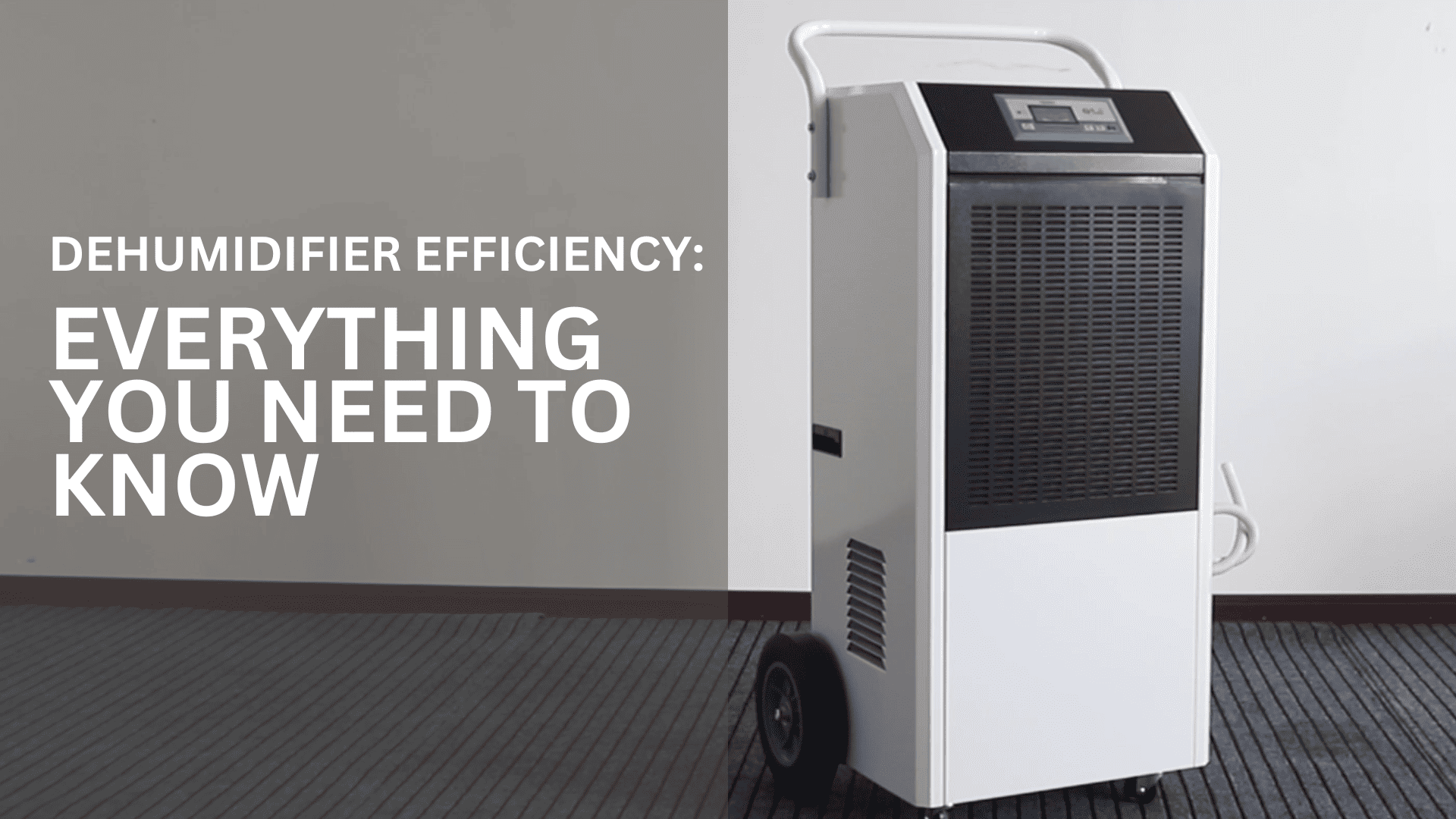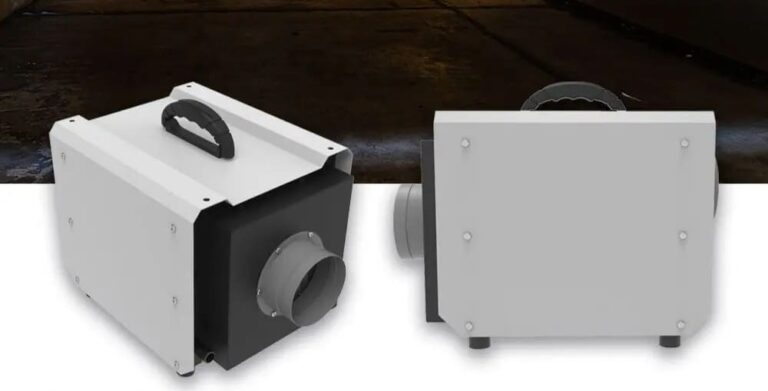Dehumidifier efficiency measures its humidity-removing capability while using the least power. A dehumidifier is an effective solution for moisture removal at your workplace, but it usually constitutes a significant portion of your electricity bill. However, dehumidifier efficiency can be controlled by following a pattern and making it a profitable investment.
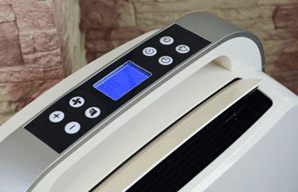
Desiccant Vs Compressor Dehumidifier Efficiency
There are two main types of dehumidifiers, mainly used for industrial and residential purposes. Let’s compare their efficiencies to choose which one is right for your workplace.
| Points Of Difference | Desiccant Dehumidifier | Compressor Dehumidifier |
| Temperature Range | Lower temperatures, below 15°C | Warm temperatures, above 15°C |
| Maintenance And Cleaning Requirements | Low maintenance | Require periodic maintenance and cleaning. |
| Noise While Running | No noticeable noise | A little noisy due to the working of the compressor |
| Energy Efficiency | Less energy-efficient | More energy efficient |
| Power Consumption | High power consumption | lower power consumption |
| Humidity Removing Efficiency | Slower than the compressor dehumidifier | More efficient |
| Efficiency In Lower Temperature | Highly efficient, no risk of freezing coils | Moderately efficient, risk of freezing coils |
| Efficiency In Higher Temperature | Low efficiency | High efficiency |
How To Measure Dehumidifier Efficiency?
The efficiency of a dehumidifier is based on a number of factors, including its size and placement, the climatic conditions of a place, the level of humidity, and the nature of industrial activity.
There is no dehumidifier efficiency calculator to give you the exact readings, but there are two main parameters upon which any dehumidifier efficiency is calculated. Let us give you a brief overview of them:
Dehumidifier Temperature Efficiency
The temperature efficiency of a dehumidifier refers to its performance under different temperatures. The variation in temperature is vital in determining the dehumidifier’s efficiency in removing humidity from the air.
Most dehumidifiers work best in temperatures above 65°F. Any temperature falling below this level may cause the coil to freeze, thus affecting the dehumidifier efficiency. Also, low temperatures may make it difficult to condense the moisture collected from the air, affecting its performance.
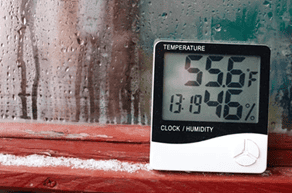
Tips For Monitoring The Dehumidifier Temperature Efficiency
- Always check the ideal temperature range given by the manufacturer and make sure it matches your workplace temperature.
- Keep checking the coil for any frost build-up if the temperature falls beneath the recommended range.
- Monitor the water tank in case of a higher temperature. If there is unusually little water in the tank, it indicates the dehumidifier’s lower efficiency.
Temperature efficiency is related to the energy efficiency of your dehumidifier. Poor performance due to extreme temperatures may cause your dehumidifier to consume an increased amount of electricity.
In such a scenario, it is always better to purchase specific dehumidifiers meant for higher and lower temperatures, respectively, as they come with special features and settings to combat extreme temperatures.
Dehumidifier Energy Efficiency
The energy efficiency of a dehumidifier refers to its effectiveness in removing the moisture content with the least possible consumption of energy.
Tips For Monitoring The Dehumidifier Energy Efficiency
- Always check the EF or EPA rating before buying a dehumidifier, as they are basically dehumidifier efficiency ratings. The EF or EPA rating indicates that the dehumidifier uses less energy than other dehumidifiers.
- Set the humidifier to the ideal humidity range of 40-55%. This will help run the compressor only when necessary.
- Check the electric meter after running the dehumidifier for an allotted period to keep track of its energy consumption.
- Measure the pints/liters of water in the tank against the kWh of energy to have a clear idea of the dehumidifier efficiency.

How To Increase Dehumidifier Efficiency
The performance of an industrial dehumidifier depends upon its efficiency; otherwise, you won’t get the most out of it. Certain steps and preventive techniques can be followed to maximize the dehumidifier efficiency. Continue reading to learn the best dehumidifier energy efficiency tips for running the dehumidifier the right way to attain the promised results.
Position It Rightly
The placement of the dehumidifier matters a lot when considering its efficacy. A dehumidifier placed too close to walls or furniture may block the proper circulation of air throughout the workplace, resulting in increased energy consumption with decreased efficiency.
A well-ventilated space is essential for the dehumidifier to have plenty of space to draw in damp air and moisture-free air. When deciding the location of the dehumidifier, it’s recommended to leave at least a 12-inch space from the walls. If your workplace has any targeted humidity sources or machinery, putting the dehumidifier close to it is better for more efficient and quick work.
Windows And Doors Must Be Kept Closed
Your workplace might be extensive, and your dehumidifier may need to run for a longer period if the doors and windows are opened. The dehumidifier must work extra hours to deal with the moisture coming from outside and the concentrated moisture present inside if the doors or windows are open. To make the most of the dehumidifier, the area where it is running must be sealed to prevent extra energy consumption.
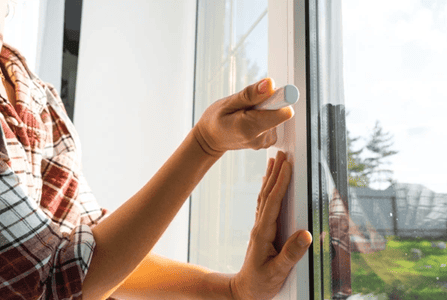
Use It In the Proper Way
Set the right humidity level so that the dehumidifier works to reach it. Once the desired level is attained, the compressor will pause, contributing sufficiently to power savings. It will only resume when the humidity level increases again. To maintain the constant level, run your dehumidifier at least 8-12 hours a day, depending upon the humidity level and industrial application.
Many models come with an auto on/off option, making the power-saving easier.
Proper Maintenance
A dehumidifier must be properly maintained so that it may yield the maximum output with the least possible power consumption. Your dehumidifier’s performance may start to decrease if its filters are not cleaned at least once a month. As the filters are on the front outer part of the dehumidifier, they gather dust more frequently. In the same manner, the coil of the dehumidifier also needs to be cleaned, as per the manual provided by the manufacturer.
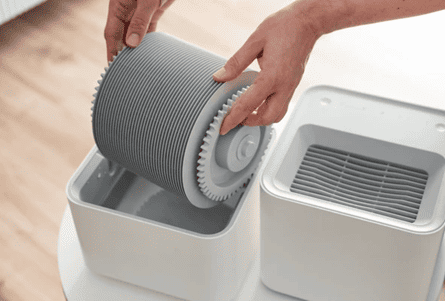
Proper Drainage Setup
Proper drainage and water disposal setup is also a key factor in increasing your dehumidifier efficiency. The water left in the water tank for too long can become moldy and fungal, negatively impacting the dehumidifier’s efficiency to some extent. Also, if you intend to use the dehumidifier for prolonged hours, you must make sure that the water tank is emptied on time, or else the dehumidifier will be automatically shut down if the water tank overfills.
Some brands of dehumidifiers offer the option of connecting a hose to any sink or drain for uninterrupted water disposal. Although this frees you from frequently emptying the tank, you still need to check if the water is transported to drain smoothly without any blockage, as it may suppress the dehumidifier’s performance.
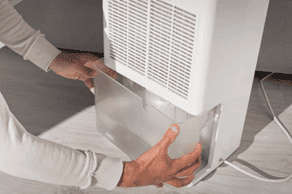
Best Energy-Efficient Dehumidifier For Basement And Industrial Use
Certain weather and climatic conditions cannot be overlooked when researching the most energy-efficient dehumidifier for basement and industrial use. The temperature and humidity level of your basement or industrial unit matter a lot in this regard.
Overall, compressor dehumidifiers win the argument for the best energy-efficient dehumidifier. This is largely due to their low energy consumption compared with desiccant dehumidifiers. Also, desiccant dehumidifier efficiency is much lower in removing moisture from the air, and if your basement or industry is spacious, then the desiccant dehumidifier will not be able to effectively reach the desired humidity level.
Industries are normally warmer due to continuous machinery operation, and desiccant dehumidifiers are not effective in warmer places. However, they can only come in handy if your basement is too cold, which is uncommon in an industrial place.
It must also be remembered that you should only choose dehumidifiers rated for low energy consumption. These dehumidifiers use 13-15% less power to remove the same amount of moisture as a normal dehumidifier.
To Sum Up
Getting the best out of your dehumidifier isn’t going to cost you an arm and a leg as long as you adhere to a proper strategy and set of guidelines. From the right placement to the cleaning and maintenance regime, you can improve dehumidifier efficiency while keeping the power cost in check.

